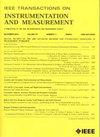离轴非球面单镜偏转法种子点自动更新迭代重建方法
IF 5.6
2区 工程技术
Q1 ENGINEERING, ELECTRICAL & ELECTRONIC
IEEE Transactions on Instrumentation and Measurement
Pub Date : 2025-07-10
DOI:10.1109/TIM.2025.3587357
引用次数: 0
摘要
离轴非球面复杂的表面特性以及几何轴和光轴的不对准给开发一种准确、有效和简单的测量技术带来了重大挑战。相位测量偏转法(PMD)是一种比干涉测量法更方便、更经济的镜面物体测量方法。然而,单目PMD需要复杂的过程或昂贵的额外设备来解决高度-坡度问题,而双目PMD需要更耗时的匹配计算。本文提出了一种基于单目PMD技术的迭代策略,该策略在迭代过程中自动更新种子点,只需要对被测离轴非球面部件上的一个点(最低、中间或最高)的高度进行近似估计。在迭代过程中,以重建曲面的最低、中间或最高点作为自动更新种子点的目标点,然后更新曲面的整体高度信息,直到相邻曲面轮廓差小于某一阈值。最后,输出离轴非球面结果。提出的单目PMD方法更直接、经济、简单,只需要基本和低成本的工具来估计被测部件的初始高度,而不需要获得种子点的三维坐标。以高精度接触测量结果为基准,通过实验验证了该方法的可行性和准确性。结果还表明,即使使用普通游标卡尺估计初始高度的不确定性对测量的表面形状影响很小,因为它只导致整个表面位置的小偏移。本文章由计算机程序翻译,如有差异,请以英文原文为准。
Iterative Reconstruction Method With Auto-Updated Seed Point of Monoscopic Deflectometry for Off-Axis Aspheric
The complex surface characteristics and misalignment of the geometric and optical axes of off-axis aspherical surfaces pose major challenges in the work to develop a measurement technique that is accurate, effective, and simple. Phase measurement deflectometry (PMD) is a more convenient and cost-effective method than interferometry for measuring specular objects. Nevertheless, monocular PMD necessitates complicated processes or costly additional equipment to resolve height-slope problems, whereas binocular PMD requires more time-consuming matching calculations. In this article, a novel iterative strategy based on monocular PMD technology with an automatically updated seed point during the iterative process is proposed, which only requires an approximate estimation about the height of one point (either the lowest, middle, or highest) on the measured off-axis aspheric component. The lowest, middle, or highest point of the reconstructed surface is used as the target of the auto-updated seed point in the iterative process, and the surface’s overall height information is then updated until the difference between two neighboring surface profiles is less than a certain threshold. Finally, the off-axis aspherical surface result is sent out. The proposed monocular PMD method is more straightforward, cost-effective, and simple, requiring only basic and low-cost tools to estimate the initial height of the measured component without the need to obtain the seed point’s 3-D coordinate. An experiment was performed to evaluate the feasibility and accuracy of the proposed method with the results of high-precision contact measurements as benchmarks. The results also indicated that even the uncertainty in the estimated initial height using common Vernier calipers has little effect on the measured surface shape, since it only leads to a small offset in the whole surface location.
求助全文
通过发布文献求助,成功后即可免费获取论文全文。
去求助
来源期刊

IEEE Transactions on Instrumentation and Measurement
工程技术-工程:电子与电气
CiteScore
9.00
自引率
23.20%
发文量
1294
审稿时长
3.9 months
期刊介绍:
Papers are sought that address innovative solutions to the development and use of electrical and electronic instruments and equipment to measure, monitor and/or record physical phenomena for the purpose of advancing measurement science, methods, functionality and applications. The scope of these papers may encompass: (1) theory, methodology, and practice of measurement; (2) design, development and evaluation of instrumentation and measurement systems and components used in generating, acquiring, conditioning and processing signals; (3) analysis, representation, display, and preservation of the information obtained from a set of measurements; and (4) scientific and technical support to establishment and maintenance of technical standards in the field of Instrumentation and Measurement.
 求助内容:
求助内容: 应助结果提醒方式:
应助结果提醒方式:


